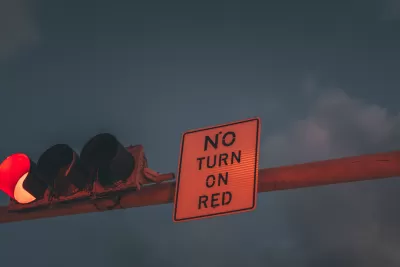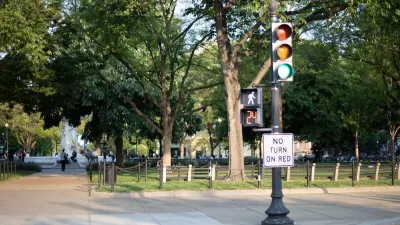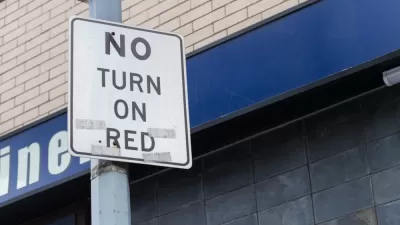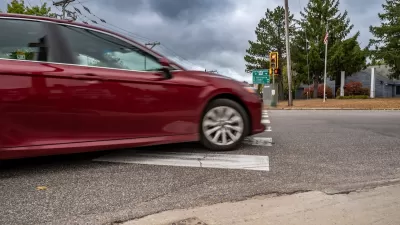Created in the 1970s to help boost gas mileage (with little proof that it had the desired effect), turning right on red creates dangerous situations for pedestrians and cyclists.

In an article in Fast Company, Aimee Rawlins argues that “Right-on-red is an ill-conceived traffic rule that needs to die.” As Rawlins explains, “The policy harms even those pedestrians and cyclists who avoid being struck, forcing them to maneuver around cars that have edged into crosswalks.”
Turning right on red wasn’t always legal on U.S. roads. “Until 50 years ago, only a handful of Western states permitted drivers to turn at a red light. But the 1970s oil crisis prompted the federal government to insist that states change their traffic laws, hoping that right-on-red would reduce gas consumed while cars idle at traffic lights.”
After the policy went into place, “A 1982 study found that the new policy triggered a sharp increase in crashes involving conflicts between a pedestrian or cyclist and a right-turning vehicle. In Ohio, for instance, such collisions rose 57% for pedestrians and 80% for cyclists; in Wisconsin, the figures were 107% and 72%, respectively.”
Turning right on red also frequently forces drivers into the crosswalk, says Bill Schultheiss of Toole Design. “That means you’ve denied the right-of-way to somebody walking or biking because a driver is blocking their path,” Schultheiss adds.
“Since the federal government created much of the current mess with right-on-red, it would be sensible for Congress and the U.S. Department of Transportation to help clean it up” by linking right-on-red regulations to grant funding, for example. “For the moment, the most viable path for dropping right-on-red goes through cities that control their own traffic rules.”
FULL STORY: It’s time to ban ‘right-on-red’

Alabama: Trump Terminates Settlements for Black Communities Harmed By Raw Sewage
Trump deemed the landmark civil rights agreement “illegal DEI and environmental justice policy.”

Planetizen Federal Action Tracker
A weekly monitor of how Trump’s orders and actions are impacting planners and planning in America.

The 120 Year Old Tiny Home Villages That Sheltered San Francisco’s Earthquake Refugees
More than a century ago, San Francisco mobilized to house thousands of residents displaced by the 1906 earthquake. Could their strategy offer a model for the present?

Opinion: California’s SB 79 Would Improve Housing Affordability and Transit Access
A proposed bill would legalize transit-oriented development statewide.

Record Temperatures Prompt Push for Environmental Justice Bills
Nevada legislators are proposing laws that would mandate heat mitigation measures to protect residents from the impacts of extreme heat.

Downtown Pittsburgh Set to Gain 1,300 New Housing Units
Pittsburgh’s office buildings, many of which date back to the early 20th century, are prime candidates for conversion to housing.
Urban Design for Planners 1: Software Tools
This six-course series explores essential urban design concepts using open source software and equips planners with the tools they need to participate fully in the urban design process.
Planning for Universal Design
Learn the tools for implementing Universal Design in planning regulations.
Clanton & Associates, Inc.
Jessamine County Fiscal Court
Institute for Housing and Urban Development Studies (IHS)
City of Grandview
Harvard GSD Executive Education
Toledo-Lucas County Plan Commissions
Salt Lake City
NYU Wagner Graduate School of Public Service





























